Sri Lanka Wildlife Protection
Learn about the various wildlife conservation efforts in Sri Lanka, focusing on initiatives within Yala National Park and other significant areas.
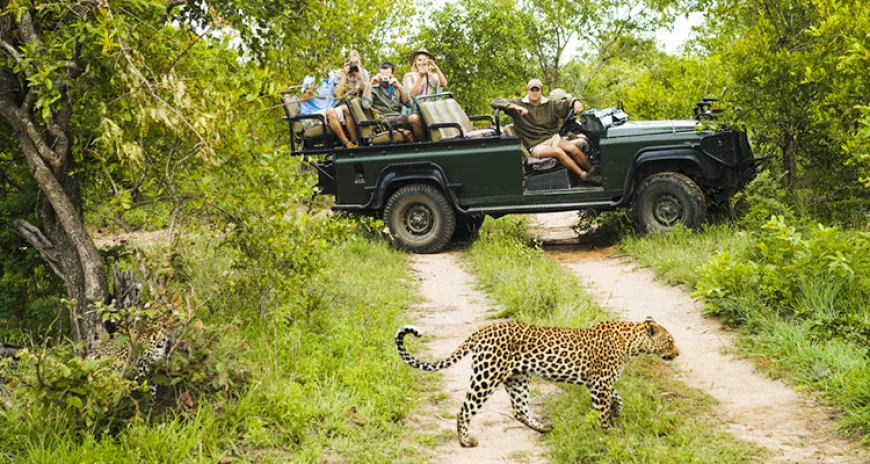
Table of Contents
- Wildlife Conservation Overview
- Conservation Significance and Efforts
- Yala Conservation Strategies
- onservation Organizations and Partners
- Conservation Partners and Stakeholders
- Conservation Wins and Hurdles
- Visitor Conservation Engagement
- Conservation Education Initiatives
- Conservation Impact and Action
- Frequently Asked Questions
- Connect and Engage
-
Wildlife Conservation Overview
Sri Lanka's rich biodiversity is protected by various organizations dedicated to wildlife conservation, including the Department of Wildlife Conservation and non-governmental entities like the Sri Lanka Wildlife Conservation Society and the Wilderness and Wildlife Conservation Trust. These organizations focus on preserving endangered species, protecting habitats, and engaging communities in conservation efforts across the island nation.
The Department of Wildlife Conservation (DWC), established in 1949, plays a crucial role in preserving the country's diverse ecosystems and wildlife. The department manages a network of protected areas that cover over 13% of Sri Lanka's total land area, including vital water sources for major rivers and catchment areas for 40 major reservoirs. These protected areas are classified into several categories under the Fauna and Flora Protection Ordinance, each serving specific conservation purposes.
The protected area network managed by the DWC includes:
- 3 Strict Natural Reserves
- 25 National Parks
- 9 Nature Reserves
- 2 Jungle Corridors
- 1 Marine National Park
- 68 Sanctuaries (including 1 Managed Elephant Reserve)
These areas provide crucial habitats for Sri Lanka's diverse wildlife, including endangered species such as elephants, leopards, and various endemic birds. The department's responsibilities extend beyond simply managing these areas; they also involve active conservation efforts, research, and community engagement.
One of the DWC's key functions is to provide legal protection for wildlife species. Every individual species is afforded legal protection through the Fauna and Flora Protection Ordinance, which forms the backbone of Sri Lanka's wildlife conservation efforts. This legal framework is essential in combating threats such as poaching, habitat destruction, and human-wildlife conflict.
The department also engages in various conservation initiatives. For instance, they organize island-wide wetland day competitions to raise awareness about the importance of wetland ecosystems. Additionally, the DWC collaborates with researchers to improve conservation strategies. A recent example is the publication of a research paper on a multi-point identification approach for recognizing individual Sri Lankan leopards (Panthera pardus kotiya), which can significantly enhance monitoring and conservation efforts for this endangered subspecies.
To support its conservation work and manage visitor access to protected areas, the DWC operates a system of fees for tourist facilities in wildlife reserves. These fees are periodically revised to ensure sustainable management of these areas while providing opportunities for wildlife viewing and education.
The Department of Wildlife Conservation works in conjunction with other governmental and non-governmental organizations to achieve its conservation goals. This collaborative approach is crucial in addressing the complex challenges of wildlife conservation in a rapidly developing country like Sri Lanka, where human activities often conflict with wildlife habitats and corridors.
-
Conservation Significance and Efforts

Wildlife conservation plays a crucial role in maintaining biodiversity and ecosystem balance. Here are key reasons why wildlife conservation is important and an overview of conservation efforts in Sri Lanka:
Importance of Wildlife Conservation:
- Preserves biodiversity and maintains ecosystem balance
- Protects endangered species from extinction
- Provides essential ecosystem services like pollination and pest control
- Supports local economies through wildlife tourism
- Offers opportunities for recreation, inspiration, and environmental education
- Ensures the resilience of ecosystems that support both wildlife and humans
- Safeguards the planet's natural beauty for future generations
Overview of Conservation Efforts in Sri Lanka:
- Department of Wildlife Conservation (DWC) established in 1949 to manage wildlife resources.
- DWC manages a protected area network covering over 13% of Sri Lanka's total land area.
- Protected areas include water sources for major rivers and catchment areas for 40 reservoirs.
- Classification of protected areas under the Fauna and Flora Protection Ordinance:
- Strict Natural Reserves (3)
- National Parks (25)
- Nature Reserves (9)
- Jungle Corridors (2)
- Marine National Park (1)
- Sanctuaries (68, including 1 Managed Elephant Reserve)
- Legal protection for all wildlife species through the Fauna and Flora Protection Ordinance.
- Collaboration with researchers to improve conservation strategies, such as leopard identification techniques.
- Engagement in community-based conservation initiatives and awareness programs.
- Implementation of a fee system for tourist facilities in wildlife reserves to support conservation efforts.
- Partnerships with non-governmental organizations like the Sri Lanka Wildlife Conservation Society for grassroots-level engagement.
These conservation efforts aim to protect Sri Lanka's rich biodiversity, including endangered species such as elephants, leopards, and endemic birds, while balancing the needs of wildlife with human development.
-
Yala Conservation Strategies
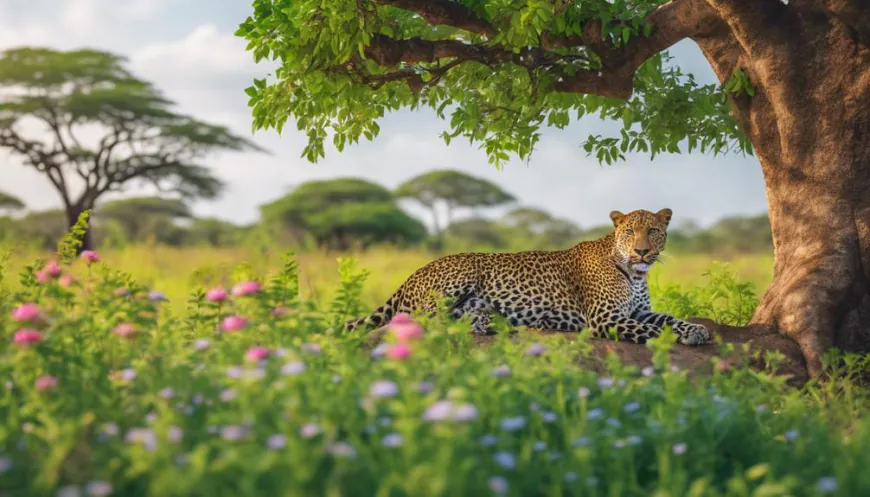
Yala National Park, one of Sri Lanka's most important protected areas, implements various conservation initiatives to safeguard its diverse ecosystems and wildlife. The park's management focuses on anti-poaching measures and habitat restoration projects to ensure the long-term sustainability of its unique biodiversity.
Conservation Initiatives:
Conservation Initiative Description Anti-poaching measures • Increased patrol frequency and coverage
• Use of advanced surveillance technology
• Collaboration with local communities for intelligence gathering
• Strict enforcement of wildlife protection lawsHabitat restoration projects • Reforestation of degraded areas
• Restoration of water bodies and wetlands
• Invasive species management
• Creation of wildlife corridorsYala National Park's anti-poaching measures are a critical component of its conservation strategy. The park authorities have increased the frequency and coverage of patrols to deter poachers and protect vulnerable species, particularly the park's renowned leopard population, which has the highest density in the world. Advanced surveillance technology, such as camera traps and drones, is employed to monitor wildlife movements and detect illegal activities within the park boundaries.
Collaboration with local communities plays a vital role in the park's anti-poaching efforts. By engaging with residents living in the buffer zones, park authorities gather valuable intelligence on potential poaching activities and foster a sense of shared responsibility for wildlife protection. This community-based approach not only enhances the effectiveness of anti-poaching measures but also promotes sustainable coexistence between humans and wildlife.
Habitat restoration projects are another key focus of Yala National Park's conservation initiatives. These efforts aim to maintain and improve the park's diverse ecosystems, which include light forests, scrubs, grasslands, tanks, and lagoons. Reforestation programs target degraded areas within the park, helping to restore natural habitats and increase biodiversity.
The restoration of water bodies and wetlands is particularly important for Yala's wildlife. These projects ensure the availability of water sources during dry seasons and maintain the park's complex of lakes, known as 'Villus', which are crucial for many species. Additionally, the park management undertakes invasive species management to protect native flora and fauna from competition and habitat alteration.
Creating and maintaining wildlife corridors is another significant aspect of Yala's habitat restoration efforts. These corridors facilitate the movement of animals between different parts of the park and adjacent protected areas, ensuring genetic diversity and allowing species to adapt to changing environmental conditions.
These conservation initiatives are aligned with the Department of Wildlife Conservation's mission to conserve wildlife resources through protection, research, education, and sustainable use. By implementing comprehensive anti-poaching measures and habitat restoration projects, Yala National Park aims to preserve its rich biodiversity for future generations while providing opportunities for sustainable tourism and scientific research.
-
onservation Organizations and Partners
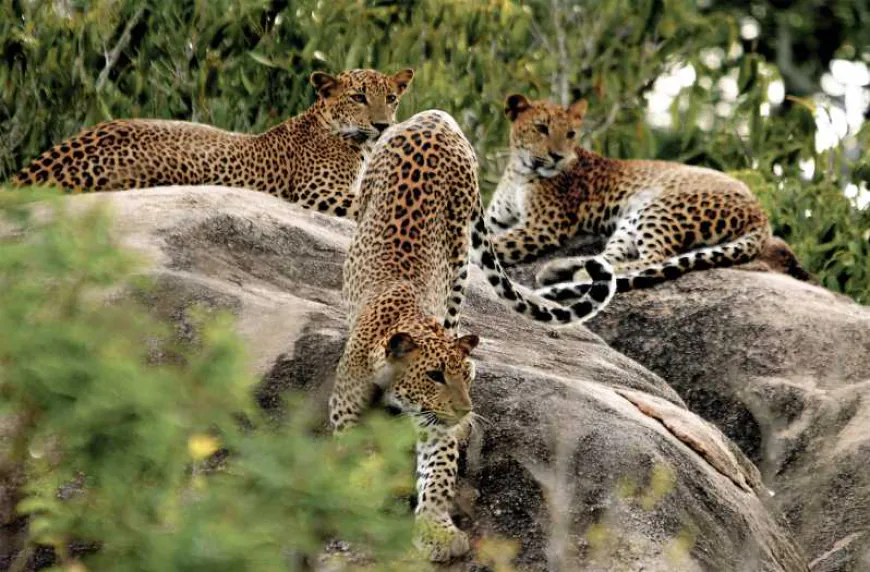
-
Conservation Partners and Stakeholders
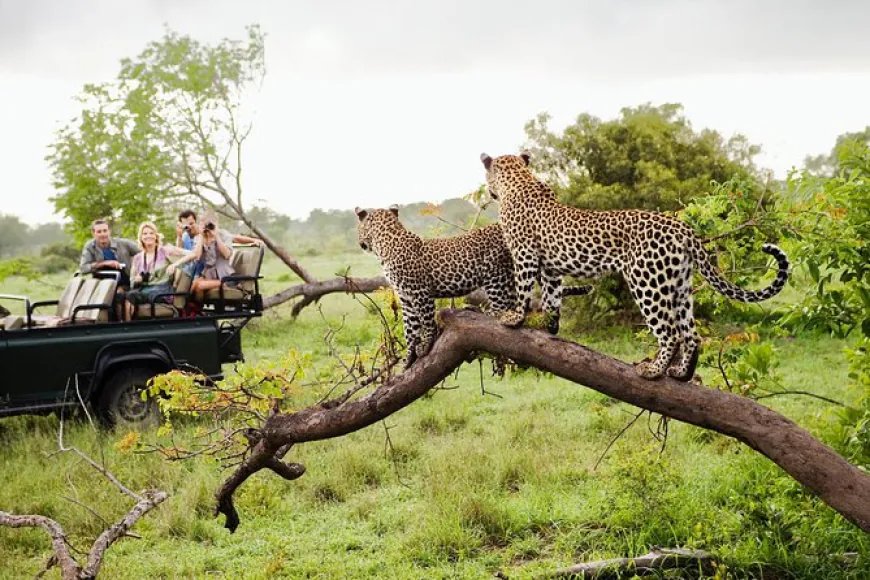
The conservation of Sri Lanka's wildlife is a collaborative effort involving government agencies, non-governmental organizations, and local community groups. Here's an overview of the key organizations involved in wildlife conservation efforts in Sri Lanka:
Key Organizations in Wildlife Conservation
Organization Type Key Responsibilities Department of Wildlife Conservation (DWC) Government Agency • Manages protected areas network covering 13% of Sri Lanka's land
• Enforces wildlife protection laws
• Conducts research and monitoring
• Implements conservation programs
• Oversees wildlife tourismWildlife and Nature Protection Society (WNPS) NGO • Advocacy and outreach programs
• Legal and policy interventions
• Conservation initiativesSri Lanka Wildlife Conservation Society NGO • Field research
• Community-based conservation projects
• Public awareness campaignsWilderness and Wildlife Conservation Trust NGO • Species-specific conservation programs
• Habitat restoration projectsLocal Conservation Committees Community Groups • Participate in community-based conservation
• Assist in human-wildlife conflict mitigation
• Support anti-poaching effortsThe Department of Wildlife Conservation (DWC), established in 1949, is the primary government agency responsible for wildlife conservation in Sri Lanka. It manages a network of protected areas including 3 Strict Natural Reserves, 26 National Parks, 9 Nature Reserves, 1 Jungle Corridor, and 62 Sanctuaries. The DWC's responsibilities extend to providing legal protection for all wildlife species through the Fauna and Flora Protection Ordinance.
Non-governmental organizations (NGOs) play a crucial supporting role in conservation efforts. The Wildlife and Nature Protection Society (WNPS), founded 128 years ago, is one of the oldest conservation NGOs in the world. It focuses on advocacy, outreach programs, and legal interventions to protect wildlife. Other NGOs like the Sri Lanka Wildlife Conservation Society and the Wilderness and Wildlife Conservation Trust conduct field research, implement community-based projects, and raise public awareness about conservation issues.
Local community groups are increasingly recognized as essential partners in conservation. These groups participate in community-based initiatives, assist in human-wildlife conflict mitigation, and support anti-poaching efforts through intelligence sharing with authorities.
Collaboration between these organizations is crucial for effective wildlife conservation in Sri Lanka. The DWC often partners with NGOs and local groups to implement conservation programs, conduct research, and engage communities in conservation efforts. This multi-stakeholder approach helps address the complex challenges of wildlife conservation in a rapidly developing country, balancing the needs of wildlife with human development and ensuring the long-term sustainability of Sri Lanka's rich biodiversity.
-
Conservation Wins and Hurdles
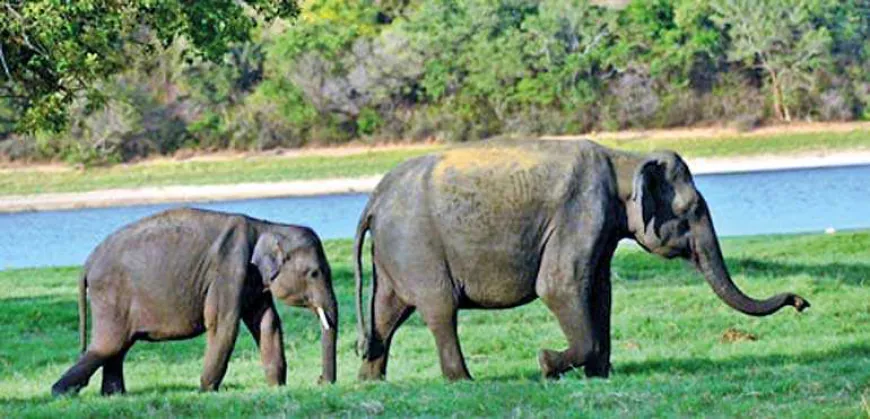
Sri Lanka's wildlife conservation efforts have seen both notable successes and persistent challenges. Here's an overview of the key achievements and ongoing issues:
Notable Successes in Wildlife Preservation:
- Establishment of Protected Areas: An extensive network covering over 13% of Sri Lanka's land area.
- Conservation of Sri Lankan Elephants: Successful efforts have led to an estimated population of 5,879 individuals as of 2011.
- Increase in Leopard Populations: Yala National Park now boasts one of the highest leopard densities in the world.
- Reforestation Initiatives: Projects like the Reforestation of a Rainforest (ROAR) Project in Diyakothakanda.
- Revival of the Sri Lanka Wildlife Enforcement Network (SLaWEN): Focused on combating illegal wildlife trade.
- Community-Based Conservation Projects: Engaging local populations in wildlife protection efforts.
- Development of Wildlife Corridors: Facilitates animal movement between protected areas.
Ongoing Challenges and Threats:
- Human-Elephant Conflict: Results in casualties and crop damage.
- Habitat Loss and Fragmentation: Due to development projects and agricultural expansion.
- Illegal Wildlife Trade and Poaching: Particularly affecting endangered species.
- Climate Change Impacts: Affecting ecosystems and wildlife habitats.
- Limited Resources for Law Enforcement: Challenges in managing protected areas.
- Balancing Conservation and Economic Development: Pressure from development needs.
- Invasive Species: Threatening native flora and fauna.
- Increasing Human Encroachment: On wildlife habitats and corridors.
- Challenges in Prosecuting Wildlife Crimes: Limited judicial awareness.
- Overconsumption of Natural Resources: Unsustainable land use practices.
Despite the successes, conservation efforts in Sri Lanka face ongoing challenges that require continued attention, resources, and collaboration between government agencies, NGOs, and local communities to ensure the long-term survival of the country's unique biodiversity.
-
Visitor Conservation Engagement

Visitors to Sri Lanka can play a significant role in supporting wildlife conservation efforts through responsible tourism practices and direct contributions to conservation initiatives. Here are some ways tourists can make a positive impact:
Responsible Tourism Practices:
- Choose Eco-Friendly Accommodations: Opt for lodgings that prioritize sustainability and support local communities.
- Respect Wildlife: Maintain a safe distance when observing animals in their natural habitats.
- Use Public Transportation or Eco-Friendly Options: Explore destinations using public transport or alternatives like biking.
- Minimize Waste: Avoid single-use plastics and properly dispose of trash.
- Conserve Resources: Be mindful of water and energy usage in accommodations.
- Eat at Local Restaurants: Support the local economy by dining at places that serve locally sourced food.
- Participate in Slow Travel: Stay in one location for longer periods to reduce travel impact.
- Respect Local Cultures: Adhere to local customs, dress codes, and practices.
- Avoid Purchasing Souvenirs: Steer clear of items made from endangered species or protected resources.
Supporting Conservation Efforts:
- Visit National Parks and Protected Areas: Entrance fees contribute to conservation funding.
- Participate in Guided Tours: Choose tours led by certified eco-tourism operators.
- Volunteer with Local Conservation Organizations: Get involved in community-based tourism initiatives or direct conservation work.
- Donate to Reputable NGOs: Support wildlife conservation NGOs operating in Sri Lanka.
- Offset Your Carbon Footprint: Invest in local reforestation or renewable energy projects.
- Educate Yourself: Learn about Sri Lanka's wildlife and conservation challenges before your visit.
- Share Your Experiences: Raise awareness about responsible tourism practices.
- Support Local Artisans: Buy from businesses that promote sustainable practices.
- Participate in Environmental Activities: Engage in beach clean-ups or other restoration efforts.
- Report Illegal Activities: Notify local authorities or conservation organizations about any wildlife exploitation or illegal activities.
By adopting these responsible tourism practices and actively supporting conservation efforts, visitors can contribute to the preservation of Sri Lanka's rich biodiversity and ensure that future generations can continue to enjoy its natural wonders. Responsible tourism not only minimizes negative impacts but also creates positive experiences for both travelers and local communities, fostering a more sustainable and ethical approach to exploring Sri Lanka's wildlife and natural habitats.
-
Conservation Education Initiatives
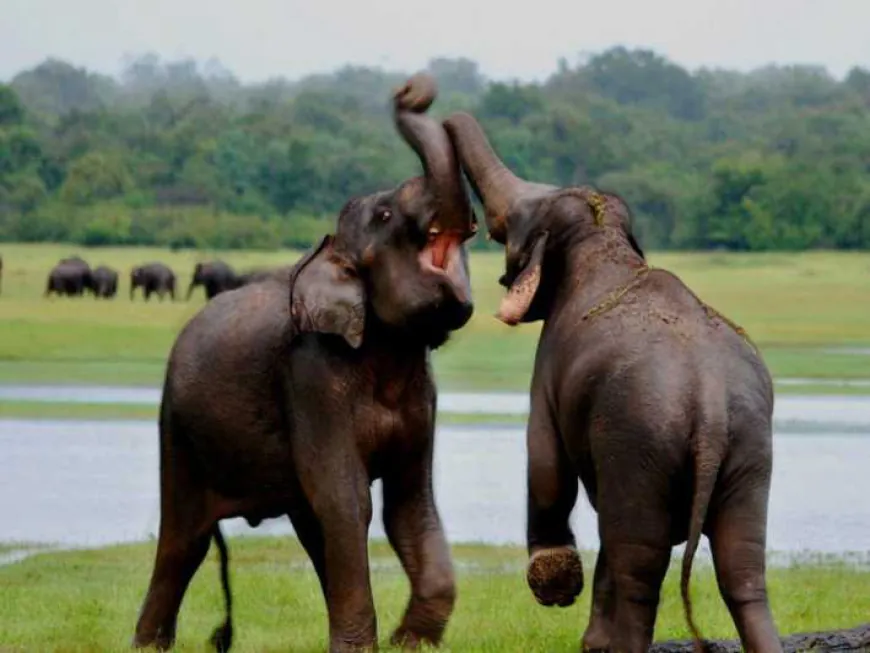
Sri Lanka has implemented various educational programs and awareness campaigns to promote wildlife conservation among both locals and tourists. These initiatives aim to foster a deeper understanding of the country's biodiversity and encourage responsible behavior towards wildlife and natural habitats.
Awareness Campaigns:
- Wetland Day Competitions: The Department of Wildlife Conservation (DWC) organizes island-wide competitions to raise awareness about the importance of wetland ecosystems.
- Advocacy and Outreach Programs: Non-governmental organizations like the Wildlife and Nature Protection Society (WNPS) conduct programs to educate the public about wildlife conservation issues.
- Public Awareness Campaigns: Various NGOs run campaigns to highlight the importance of protecting endangered species and their habitats.
- Digital Platforms: Social media and digital platforms are increasingly used to spread conservation messages and engage younger audiences.
Educational Initiatives for Locals and Tourists:
- Sri Lanka Travel Expert Training Portal: Developed by the Sri Lanka Tourism Alliance, this portal offers free courses to educate travel agents and professionals about the country's attractions and conservation efforts. Modules cover wildlife safaris, traveler safety, and essential information.
- E-Learning Platform for Tourist Guides: Introduced by the Sri Lanka Tourism Development Authority (SLTDA), this platform enhances the knowledge and skills of registered tourist guides in sustainable tourism practices.
- TUI Academy Sri Lanka: A partnership between the Youth Career Initiative and TUI Care Foundation, this academy provides hospitality training to disadvantaged young people, including modules on sustainability and environmental awareness.
- University Programs: Local universities offer tourism and tourism-related study programs, although there is a need for improvement in practical experience and English language proficiency.
- Empowering Young Women: Some initiatives focus on empowering young women to pursue careers in the tourism sector, promoting gender equality and providing new perspectives.
- Collaborative Efforts: Partnerships between the tourism industry and educational institutions aim to provide internships and apprenticeships, making practical experience a mandatory component of tourism studies.
These educational programs and campaigns play a crucial role in creating a more informed and responsible approach to wildlife tourism in Sri Lanka. By educating both locals and tourists, these initiatives contribute to the long-term sustainability of the country's wildlife conservation efforts and promote a balance between tourism development and environmental protection.
-
Conservation Impact and Action
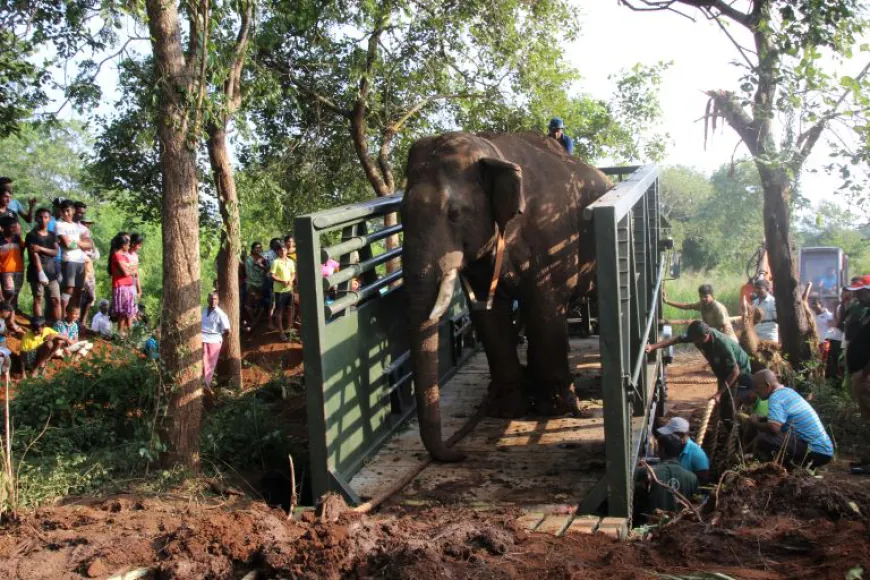
Sri Lanka's wildlife conservation efforts involve a multifaceted approach combining government initiatives, NGO activities, and community engagement. Here's a recap of key conservation efforts and a call to action for supporting wildlife conservation in Sri Lanka:
Recap of Conservation Efforts:
- Protected Area Network: Extensive network managed by the Department of Wildlife Conservation, covering over 13% of Sri Lanka's land area.
- Legal Protection: Wildlife species are legally protected through the Fauna and Flora Protection Ordinance.
- Collaborative Efforts: Cooperation between government agencies, NGOs, and local communities.
- Anti-Poaching and Habitat Restoration: Implemented in national parks like Yala.
- Wildlife Enforcement Network: Revival of the Sri Lanka Wildlife Enforcement Network (SLaWEN) to combat illegal wildlife trade.
- Community-Based Initiatives: Engaging local populations in conservation efforts.
- Educational Programs: Awareness campaigns for both locals and tourists.
- Wildlife Corridors: Development to facilitate animal movement.
- Research Initiatives: Enhancing conservation strategies, such as leopard identification techniques.
Call to Action for Supporting Wildlife Conservation:
- Practice Responsible Tourism: Respect wildlife, minimize environmental impact, and support eco-friendly accommodations.
- Visit Protected Areas: Entrance fees contribute to conservation funding.
- Participate in Guided Tours: Choose tours led by certified eco-tourism operators to support sustainable practices.
- Volunteer and Donate: Support reputable wildlife conservation NGOs operating in Sri Lanka.
- Educate Yourself: Learn about Sri Lanka's wildlife and conservation challenges before visiting.
- Report Illegal Activities: Notify local authorities or conservation organizations about wildlife exploitation.
- Support Local Businesses: Choose artisans and businesses that promote sustainable practices.
- Engage in Restoration Activities: Participate in beach clean-ups or other environmental restoration efforts.
- Raise Awareness: Share your experiences and advocate for responsible tourism practices.
- Offset Carbon Footprint: Invest in local reforestation or renewable energy projects.
By taking these actions, individuals can contribute to the preservation of Sri Lanka's rich biodiversity and support ongoing conservation efforts. Every small step towards responsible tourism and active engagement in conservation initiatives helps ensure the long-term survival of Sri Lanka's unique wildlife and ecosystems for future generations to appreciate and enjoy.
-
Frequently Asked Questions

Here are some frequently asked questions (FAQs) about wildlife conservation in Sri Lanka:
What are the main threats to wildlife in Sri Lanka?
The main threats include habitat loss due to deforestation and development, human-wildlife conflict, poaching, climate change impacts, and invasive species.
Which endangered species are found in Sri Lanka?
Sri Lanka is home to several endangered species, including Asian elephants, Sri Lankan leopards, sloth bears, and various endemic birds.
How can tourists contribute to wildlife conservation in Sri Lanka?
Tourists can contribute by practicing responsible tourism, visiting national parks, supporting eco-friendly accommodations, and donating to reputable conservation organizations.
What is the role of the Department of Wildlife Conservation (DWC) in Sri Lanka?
The DWC manages protected areas, enforces wildlife protection laws, conducts research, and implements conservation programs across Sri Lanka.
Are there volunteer opportunities for wildlife conservation in Sri Lanka?
Yes, several NGOs and local organizations offer volunteer opportunities for wildlife conservation projects and research initiatives.
What is the significance of Yala National Park for wildlife conservation?
Yala National Park is known for its high leopard density and diverse ecosystems. It implements various conservation initiatives, including anti-poaching measures and habitat restoration projects.
How does Sri Lanka address human-elephant conflict?
Efforts to mitigate human-elephant conflict include creating wildlife corridors, implementing early warning systems, and engaging local communities in conservation efforts.
What legal protections exist for wildlife in Sri Lanka?
The Fauna and Flora Protection Ordinance provides legal protection for wildlife species in Sri Lanka.
How can local communities benefit from wildlife conservation?
Local communities can benefit through eco-tourism opportunities, participation in conservation projects, and sustainable livelihood initiatives.
What educational programs are available to learn about wildlife conservation in Sri Lanka?
Various awareness campaigns, educational initiatives, and training programs are offered by government agencies, NGOs, and tourism organizations to educate both locals and tourists about wildlife conservation.
-
Connect and Engage
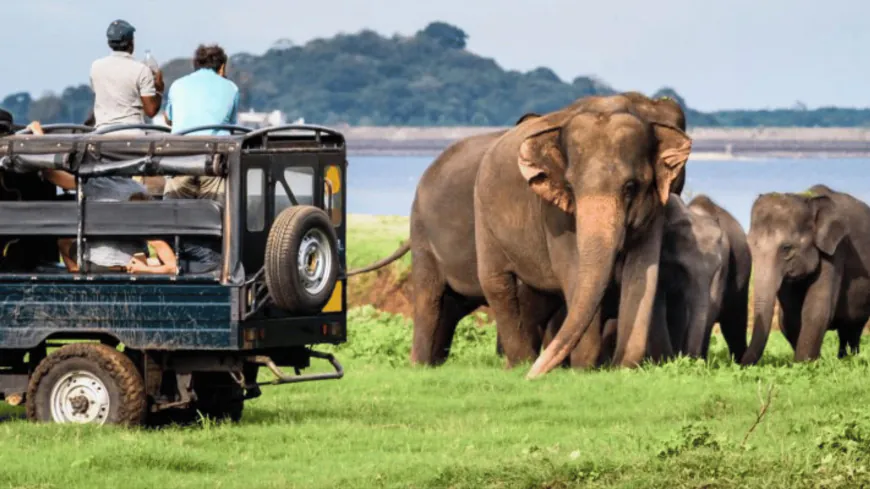
Here are ways to get involved and stay connected with wildlife conservation efforts in Sri Lanka:
-
Contact Yala National Park for more information:
- Email: [email protected]
- Phone: +94723456726
-
Join the Yala Sri Lanka newsletter to receive updates on conservation initiatives and wildlife sightings.
-
Comment on and share blog articles from yalalk.com to spread awareness about Sri Lanka's wildlife and conservation efforts.
-
Follow Yala National Park on social media platforms for the latest news and stunning wildlife photography.
-
Consider volunteering or donating to support ongoing conservation projects in Yala and across Sri Lanka.
-
Book an eco-friendly tour or safari to experience Sri Lanka's wildlife responsibly while contributing to conservation funding.
-
Participate in online discussions and webinars about wildlife conservation hosted by Yala National Park.
-
Share your own wildlife experiences and photos from Yala, tagging @YalaSriLanka to help promote conservation awareness.
By staying engaged and spreading the word, you can play an important role in protecting Sri Lanka's unique biodiversity for future generations. Every action, no matter how small, contributes to the larger goal of wildlife conservation.
-
What's Your Reaction?








































